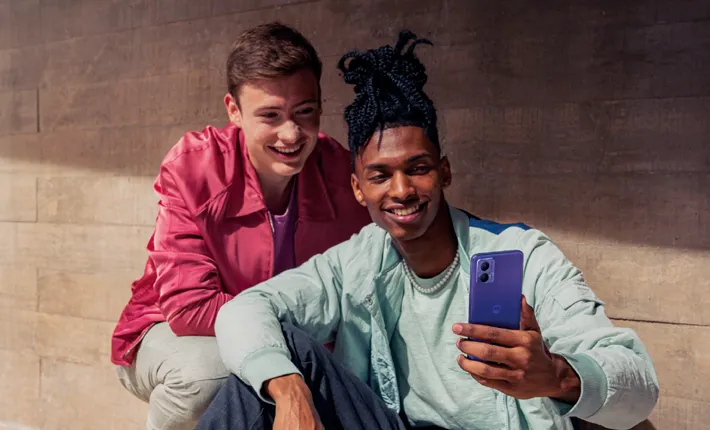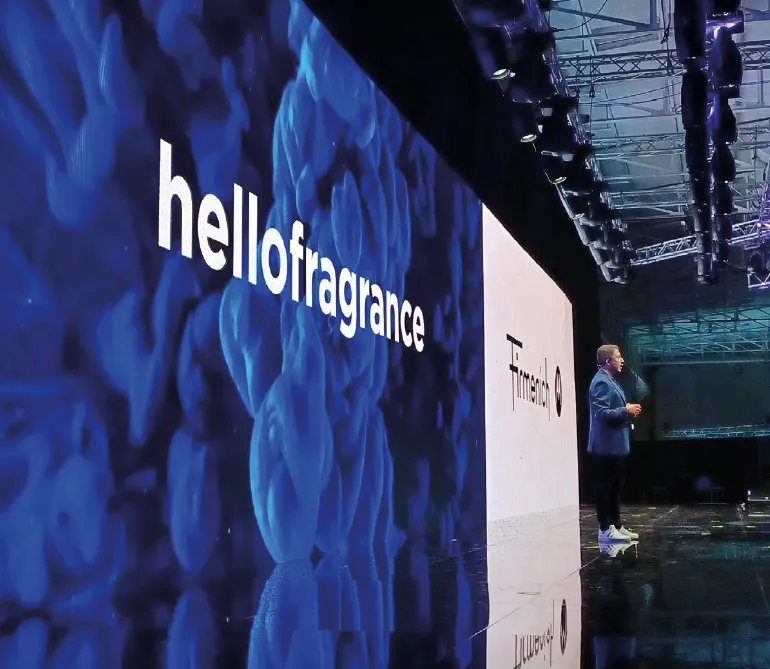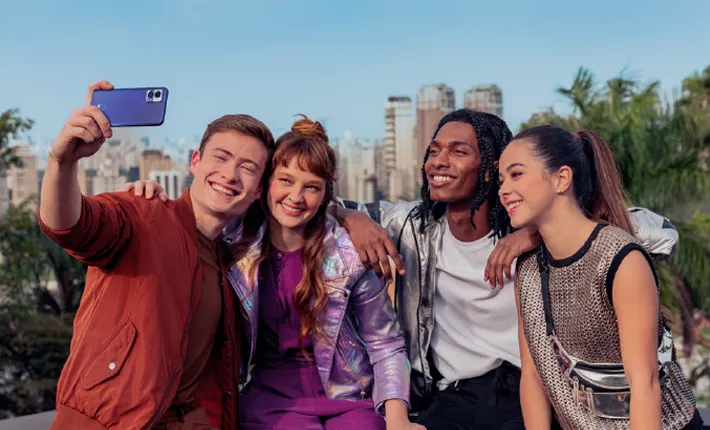
Pantone helped Motorola convey emotions and brand values through colour.
Gone are the days when you could have a product any colour you want, as long as it's black. Today, it seems to be quite the contrary. True, designers have had an eye for aesthetics, including colour, since a long time, but bestowing a colour upon a product has essentially remained a very personal and subjective exercise. Yet today there is a way to know, with a great amount of precision, which colours are best perceived by consumers, and how to create specific emotional reactions through the use of precisely graded liveries for your latest product. To achieve this, Motorola recently teamed up with the ultimate colour specialist, Pantone.
“Emotions are a premium feature”

Ruben Castano, Head of Customer Experience at Motorola Mobility.

Motorola teamed up with Swiss fragrance specialist Firmenich to create a scent embodying the brand's values.
Is Motorola's recent collaboration with Pantone around one of its latest mobile phones a sign of an emerging trend in the design world, with a particular focus on colour?
We identified the need for a compact design that still had premium features. It's not only the display, the camera and chip set, it's also the design, and in this case the colour choices: it's the functional aspect and the emotional one, combined. We set out to develop a product with a minimal, elegant design, with colour treated as a premium feature. We decided this was the perfect occasion to kick off our partnership with Pantone. The reason is that it's a very consumer-driven product, just like colour, which is a very personal choice. Every year, for the past 20 years, Pantone has defined the “colour of the year”. This year it happens to be “Very Peri”. It's a colour that talks about optimism, creativity, and embodies many of the values that consumers are expressing today. We also added 3 more colours that complement the colour of the year, helping us address different consumer segments.
The collaboration with Pantone led to the amazing colours of the new Motorola Edge Neo 30.
Do you think the wide recognition of Pantone as a brand contributed to the appeal of the product?
Of course, but the most important thing for us was that there are shared values between Motorola and Pantone. Pantone, as a company, was originally born creating standards for colours, so they are very detail-oriented, just like us, but most importantly they can understand the emotional reaction that colour generates in consumers. When we, as a design and engineering organisation within Motorola, create a product, having quantifiable data is extremely important to make decisions on product design, but then we always lacked information about the emotional side. We had a lot of functional information, but little on how to control emotional reactions from consumers. Pantone now brings that to the table.Motorola has always been recognised for the design of its products. Is design still one of your key drivers for the future?
It is, in particular the combination of design and emotions is key. We are making sure we're listening to consumers, that we hear their voice and understand the market. We try to engage consumers at an emotional level as well. With Pantone, we are addressing some of the senses, in particular vision, with colour. It's not only the colour, but also the texture, the touch. So it's not just taking a device and dipping it into a bucket of paint, we are starting to address the tactility aspect. How does it feel in your hand? How does it avoid fingerprints? How can we make it silky smooth? Last week we announced that we were working on a proprietary fragrance we developed with a Swiss company called Firmenich, a global leading company specialised in fragrance development. We started working with their chemists to develop a fragrance that would embody those elements of innovation, technology and design that Motorola stands for. Now, for everyone of our new products, when consumers open the box, they will be able to experience the unique fragrance that embodies the Motorola brand values. Also, the Motorola fragrance will be part of the experience in our stores around the world as customers walk in. Now we're thinking about what we can do with sound, or with taste. It's an open canvass and we want to continue exploring the human senses.
“Today, consumers don't want brands to tell them what's good for them, they want a relationship with brands that stand for the things they believe in”

A midrange product, yet offering premium features.It was designed to fit nicely in one's hand, giving positive tactile emotions in addition to a stylish look and finish.
How important is the unboxing experience in the customer journey?
It's very important. Unboxing is the real moment of truth. You really hold the brand in your hands, and experience what we truly stand for. We're also introducing new ecofriendly packaging, made out of 100% recycled materials, compostable, 100% plastic-free. That's also important. Consumers, nowadays, don't want brands to tell them what's good for them, they want to have a relationship with brands that share common values and stand for things they believe in as well. Our efforts around eco-conscious design have to manifest themselves, not only in what we do at the factory and how we ship products around the world, but also in things like the box itself. End-of-life is very important, too. Consumers want to know what the brand does for them when they want to dispose of or upgrade their device and move on to the next product.What’s your personal definition of a designer?
A designer is a person who has an extreme amount of empathy for other human beings. I tie it back to understanding how humans live their life and interact with their world. Designer just have that unique ability of looking at things with a critical eye, at first, then a creative eye, to try and understand how the interaction can be improved. So it's empathy, with an eye on how to improve things.How does passion come into the equation?
You live your passions every day. You don't just get up and work for eight hours, and then you become a different person after you close your laptop. I'm always looking at things through that eye of empathy, thinking of how to improve things, whatever I'm doing. I love to cook, my mum had a restaurant all her life. I grew up cooking with her. On Sundays, I have the opportunity to re-live what being a designer means to me: you start from an idea, and within a few hours you put something on a plate that goes through that process of design, of thinking of the end result, expecting some emotional reaction. Being able to curate all that is very exciting for me. You have to live your passions in many different ways throughout your day, throughout your life, and for me, cooking is definitely one of them.
The collaboration with Pantone led to the amazing colours of the new Motorola Edge Neo 30.
Profile
Ruben Castano leads MotorolaCustomer Experience for the company's Mobile Business Group. Currently based in Chicago, throughout his career he has led successful design teams in Europe, Asia and the Americas, allowing him to gain experience in key global markets and a broad consumer view towards design and brand development. He joined Motorola in 2005, after making his mark in Europe as a rising talent of Whirlpool's Design Studio. He holds a bachelor's degree in Design and Strategy from the Istituto Europeo di Design in Milan, and has been recognised throughout his career with multiple design awards.
Copyright © Homa 2023
All rights reserved

.jpg?VGhlIFBlcmZlY3QgU2xvdC1pbijmraPnoa4pLmpwZw==)












.jpg?MTkyMHg3MjDvvIhkZXPvvIkuanBn)
.jpg?MTAyNHg3NDDvvIhkZXPvvIkuanBn)



















